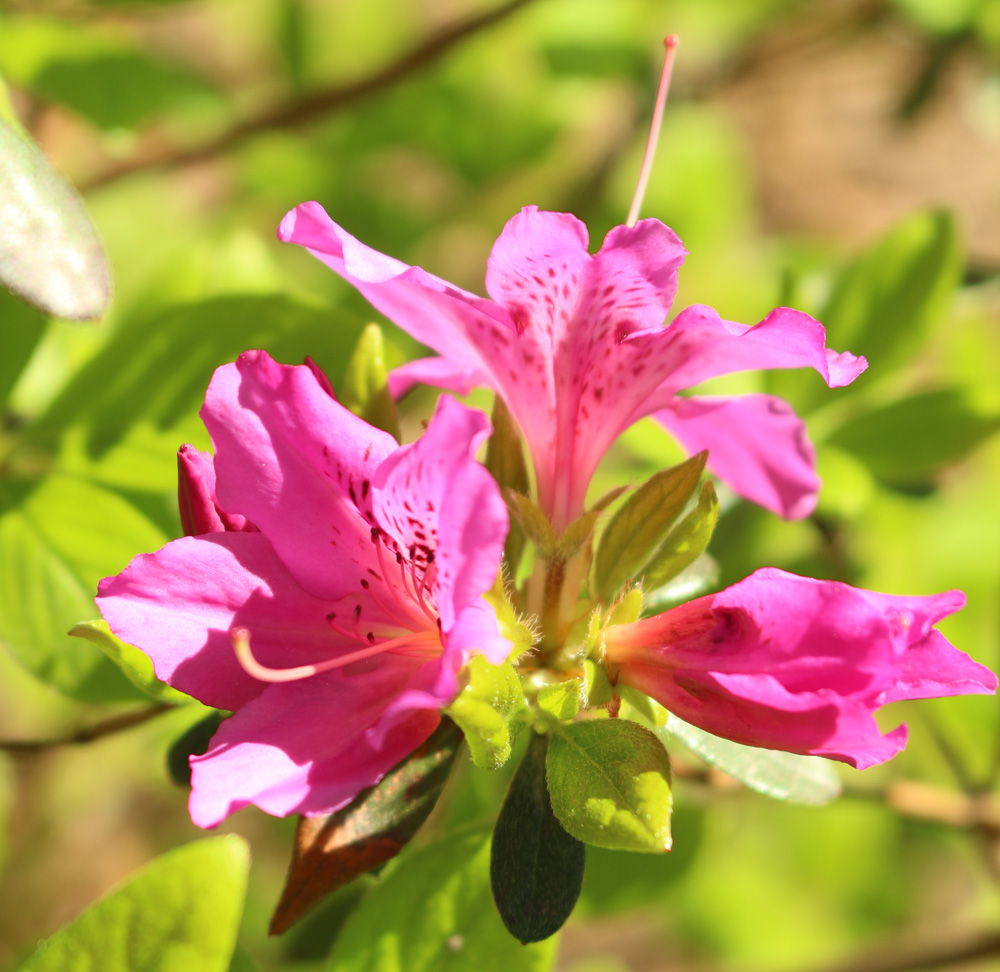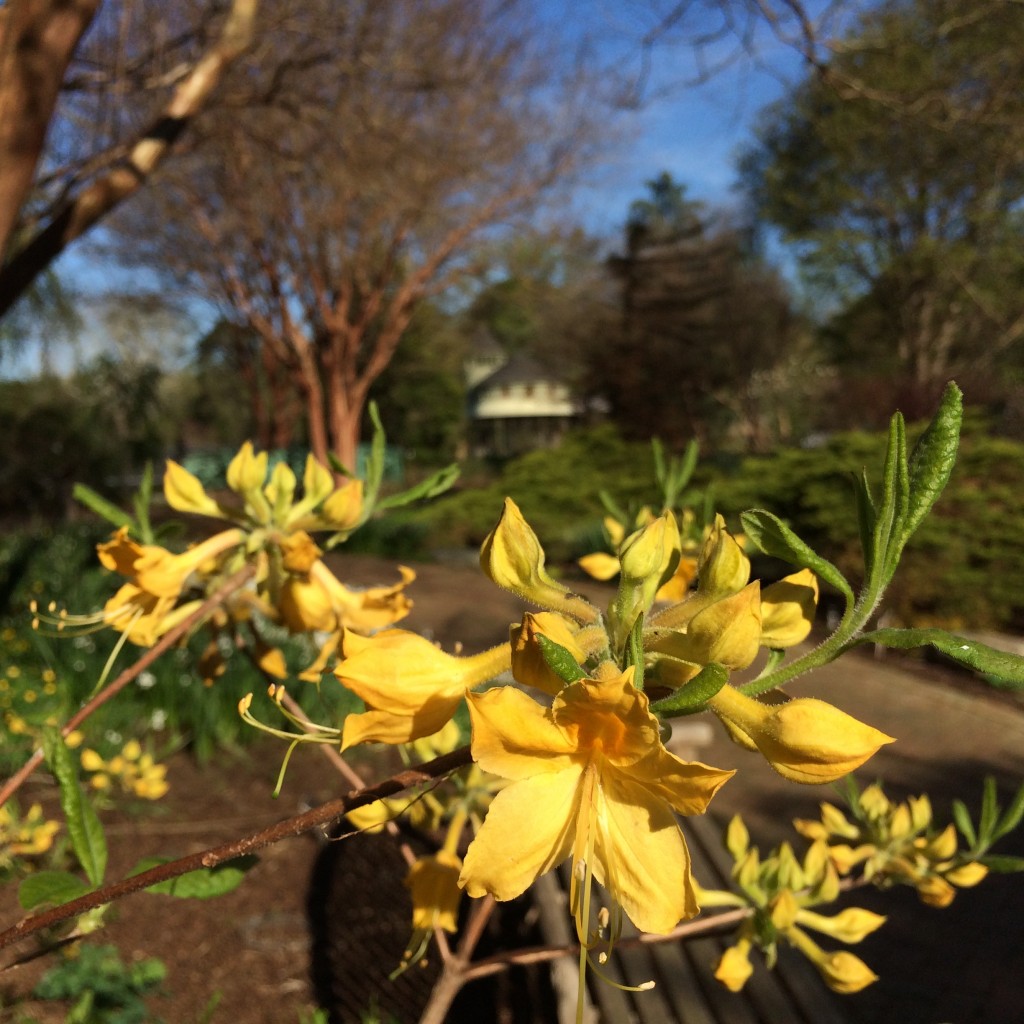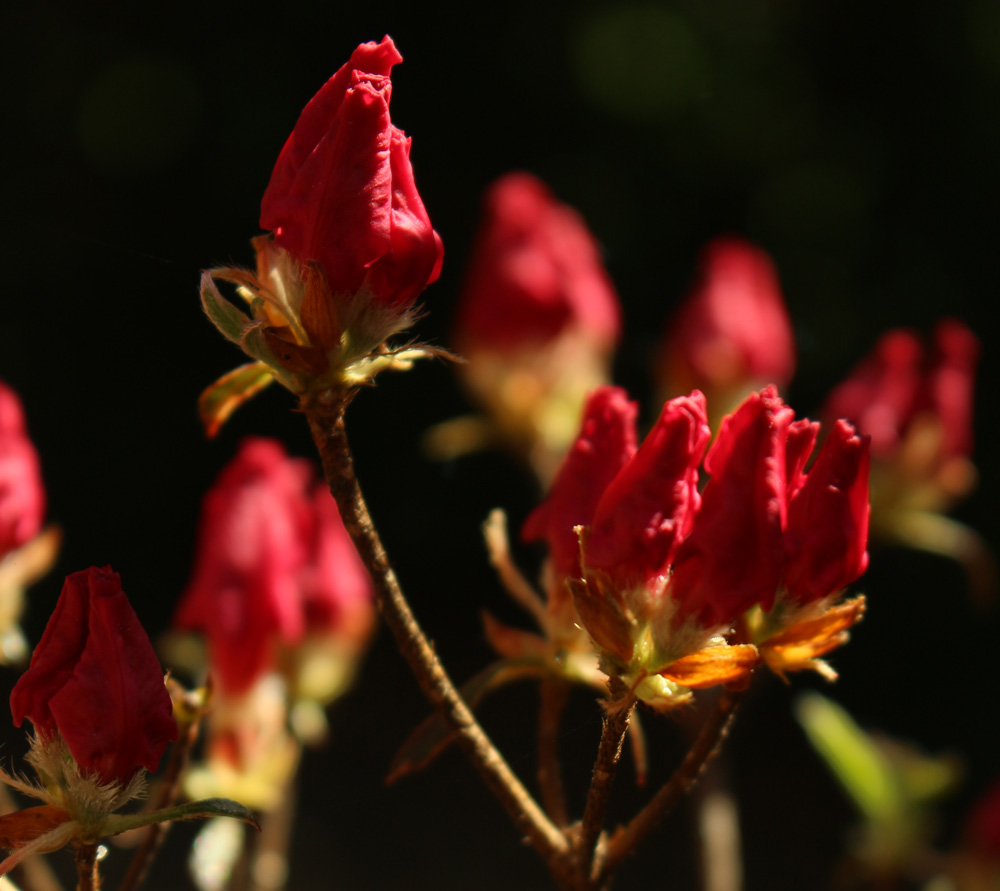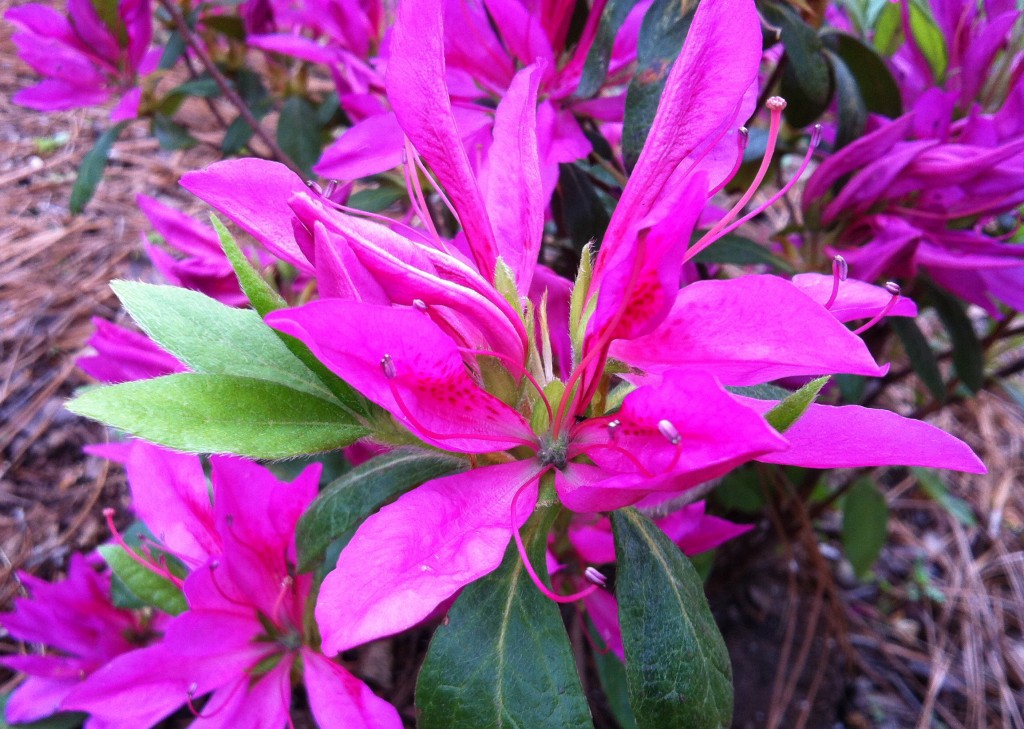Azaleas Abloom in Spring

Rhododendron ‘Karen’ at the very start of its bloom time. You’ll find it along the Joan Van Arnam Azalea Walk in Flager Garden at Lewis Ginter Botanical Garden.

Florida azaleas blooming in Flagler Garden this week. The Children’s Garden CWDKids Tree House in the background.
Walking around Lewis Ginter Botanical Garden on this early day of spring is like getting lost in a fantasy world where everything is fair and lovely. One would easily be enchanted by sun-kissed daffodils in bright yellow and white, captured by blushing camellias in robust red and pink, and simply mesmerized by the sight of a few late cherry blossoms’ petals fluttering about in the whispering wind — delicate, pure, and white. With all the pretty blooms competing for attention, you may not at first notice the azaleas just starting to open along the Joan Van Arnam Azalea Walk, part of Henry M. Flagler Garden. Right now, many of the juvenile buds are still nestled among the leaves; but very soon these Southern favorites will explode into a display of charming vibrant colors — white, red, pink, coral, purple, lavender, even orange and yellow.
Azaleas have always been a dear reminder of home for many people. In April in Virginia, you can see these blooms abound in many yards and gardens. They are plants of all seasons that exist in a wide variety of sizes, colors, planting zones, and bloom times. They can be a small shrub or taller than a person, evergreen or deciduous, and single- or double-flowered. As of today, there are over 10,000 registered azalea cultivars, accommodating for all landscaping needs and personal preferences. Plus, simply with some good acidic soil and proper drainage, azaleas thrive, if they are not devoured by deer, those voracious pests notorious among gardeners. Lewis Ginter Botanical Garden alone is home to 176 species of azalea, or 264 if you include the rhododendron. All azaleas are rhododendrons, but not all rhododendrons are azaleas. Azaleas are so plenty and pretty, so versatile and vigorous.
In terms of provenance, deciduous azaleas, which are more cold-hardy and provide a mass of colors in spring, are native to North America; while evergreen azaleas, which thrive in warmer climate and bloom in a variety of forms (including strap-like, star-shaped or round petals), are native to Asia. We have both types. If you are really nerdy (like me), you can use this Garden Explorer site for more information on what particular plants we have in our azalea collection.

Buds of Rhododendron ‘Christi Lyn’ will be opening very soon as you can tell. You will find these beauties along the Joan Van Arnam Azalea Walk.
You can find many, like the show-stopping Rhododendron ‘Tina’s Whorled’ starting to bloom now along the Joan Van Arnam Azalea Walk, which was designed and created with an explosion of colors to last throughout spring and early summer. There are so many different types of azalea and bloom times truly vary from year to year, however, the American Rhododendron Society Journal gives a helpful overview of different types, and general bloom time, that you may find helpful, keeping in mind that we are a few weeks ahead of times listed since we are further south. As you stroll through the Walk, you will start with one end of the color spectrum and pass through many different shades and flower forms along the way, marveling at the multi-colored blossoms and reflecting on the marvelous abundance of spring. If you love azaleas, you have even more of them to look forward to seeing. We recently announced that Lewis Ginter Botanical Garden is the recipient of a 79-acre Hanover estate with a massive azalea collection, consisting of over 1,800 varieties. With this generous gift, in the coming years we hope to bring you even more azaleas and education about these beloved plants.
Not only widely loved here in the United States, azaleas are also dearly cherished by people of Oriental cultures. In China, the word “azaleas” denote womanhood, thoughtfulness, and pensiveness. In Japan, every April, people hold annual festival in honor of the Tsutsuji Azalea, of which name suggests purity within a wandering soul. Azaleas have been the endless inspiration for many Chinese and Japanese poets. Du Fu, a major poet of the Tang dynasty, immortalized the flower in his poem “Alone, Looking for Blossoms Along the River,” where the mere sight of the blossoms stirred up deep down in the exiled poet his yearning for home. Poignantly, he captured the heart-rending beauty of azaleas in these stanzas:
“At Madame Huang’s house, blossoms fill the paths:
Thousands, tens of thousands haul the branches down.
And butterflies linger playfully — an unbroken
Dance floating to songs orioles sing at their ease.
“I don’t so love blossoms I want to die, I’m afraid,
Once they are gone; of old age still more impetuous,
And they scatter gladly, by the branchful. Let’s talk
Things over little buds – open delicately, sparingly.”

Rhododendron ‘Tina’s Whorled’ just starting to bloom in Flagler Garden.